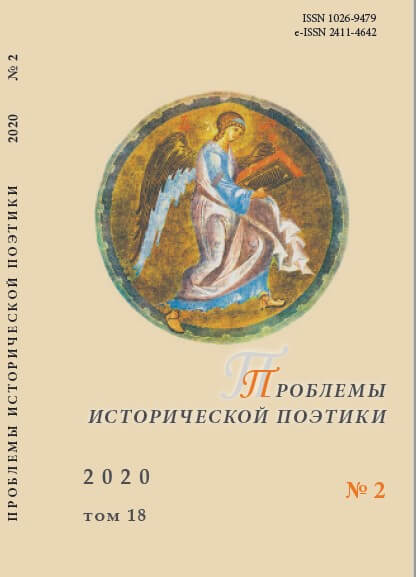Категория соборности в иконографической поэме-хронике Н. С. Лескова «Соборяне»
The Category of Sobornost' in the Iconographic Chronicle Poem of Nikolay Leskov The Cathedral Clergy (Soboryane)
Author(s): Galina V. MosalevaSubject(s): Christian Theology and Religion, Russian Literature, 19th Century, Eastern Orthodoxy, Theory of Literature
Published by: Петрозаводский государственный университет
Keywords: sobornost' (conciliarism); dogma; poetics; architectural style; canon; narration;
Summary/Abstract: The article regards the evocation of sobornost' (conciliarism) as a phenomenon of Orthodoxy in Leskov’s chronicle The Cathedral Clergy (Soboryane). The author emphasizes Leskov’s manner to poeticize Orthodox dogmatic teachings and the ways of their artistic presentation. By depicting clergy and its religious characters as part of the ideal modes of Russian life Leskov aims at refocusing readers’ attention on God-centered mind inherent in Russian literature of the 11th–16th centuries. A five-part structure of the chronicle is aligned with Stargorod’s five-domed Cathedral. Leskov prefers patericon as an inner form associated with its temple and liturgical plots, motives and images. The structure of Leskov’s patericon is notable for its iconographic patterns and symbols — the trend which makes The Cathedral Clergy (Soboryane) a chronicle poem. By poetizing “an old Russian fairy tale” Leskov seems to restore Slavonic ornamental script as the main principle of his writing which is symbolized in “knitting pins” depicted in The Cathedral Clergy (Soboryane). Along with the focus on verbality and Orthodox fables Leskov poetizes the Holy Scripture. New Testament (the Gospel according to St. John in particular) seems to be central “hagiographic writing” related to Stargorod Trinity. The moment of truth for Leskov’s character (who is regarded as a christian) has to do with internal eventivity when a person finds himself in front of God’s face rather than with external one regardless of pressing social challenges of the latter.
Journal: Проблемы исторической поэтики
- Issue Year: 18/2020
- Issue No: 2
- Page Range: 217-237
- Page Count: 21
- Language: Russian

